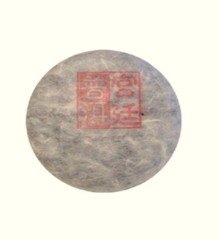Pu-erh is a highly regarded tea with a long history originating from deep within the mountains of Yunnan province, China. It was first made during the Tang dynasty (618-907) and can be categorized as sun-dried green tea, also known as Mao Cha. The final market product is often compressed into various shapes such as discs, rectangles or squares. Pu-erh tea can also be purchased in loose-leaf form.
There are two types of Pu-erh: Raw (Sheng) and Ripe (Shou). Each is made using a different method.
Raw Pu-erh uses the traditional method and can take years, even decades before it is ready to be consumed. The sun dried green leaves (Mao Cha) enable the presence of live microbes to remain which transform the tea over time through slow fermentation. Freshly made Raw Pu-erh looks and tastes similar to green tea. Overtime, the colour slowly browns and the flavour becomes richer and fuller in the mouth. This ability to mature and transform is what makes this tea so special.
Ripe Pu-erh uses a new method conceived by the Kun Ming Tea Factory in 1973-1974. It follows the ancient dark tea making process utilising mould fermentation. This method accelerates microbial fermentation producing Pu-erh tea ready for immediate drinking. This style of Pu-erh can also be stored to mellow and sweeten over time, providing a glimpse into the flavour of a traditionally made Pu-erh. It is interesting to note that Ripe Pu-erh is the preferred style by Westerners and the most commonly consumed in China.
Pu-erh tea is also a healthy beverage and can aide digestion, assist in weight loss and boost your immune system.




